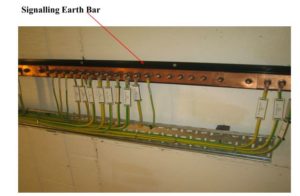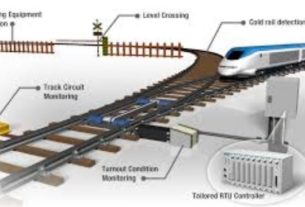Railway Drain Screen Wire Cables Power Cables SER Earth Cables
Definition:
A single or group of wires bunched together with sheath protection is called Cable.
DRAIN/SCREEN WIRE: An uninsulated solid or stranded tinned copper wire which is placed directly under a shield. It touches the shield throughout the cable, and, therefore, may be used in terminating the shield to ground. A big labor saver in terminating all shield-ed cables. It is completely necessary on spiral shielded cables because it eliminates the possibility of induction in a spiral shield.
General Material and Construction requirements:
Conductor:
• The conductor shall be of annealed copper wire either solid, stranded or flexible as required by the definitive specification. (Cat 2)
• Conductors shall be in accordance with BS 6360 unless directed otherwise by the definitive specification. (Cat 2)
• Conductors used in ‘thin wall’ wire shall be concentric. (Cat 2)
• Tinned conductors, in accordance with BS 4109, shall be used where reaction may occur between the conductor and insulation.
Insulation:
• The insulation shall be extruded on to the conductor. It shall be possible to remove the insulation without damage to the conductor or any tin coating. (Cat 1) & (Cat 2).
• Where required separator tape may be used between the conductor and the insulation however it shall be of contrasting colour to that of the conductor.
Electrical requirements
a) All cables shall be rated for adequate voltage, current and power, in compliance with BS 7671. The sheathing shall be rated at not less than 1000 volts dc.
b) Where lead sheathed cables are used, the system design and cable arrangement shall be such as to minimise the risk of:
1) traction voltages coming into contact with the sheath;
2) fire or other damage.
c) Spare cores shall not be cut back. All cable cores, whether main cables or tail cables should be terminated.
d) The design shall ensure that there are no traction fault paths through an equipment room.
e) The design of the system shall fully consider the effect of capacitance and induction in its safe and reliable operation.
f) Emission and susceptibility of the cable in its application shall meet the requirements of 2-01018-001.
g) Cables shall be screened to provide the basis for circuit fault detection.
h) Safeguards against the foreseeable consequences of any cable failure or deterioration shall be embodied in the design. The system design shall incorporate all reasonably practicable means of providing intrinsic protection to minimise dependence on maintenance.
Mechanical requirement:
• All cabling used in wayside signalling shall be insulated and sheathed separately to provide both electrical and mechanical protection.
• Any cable shall be capable of being installed without damage to the insulation and sheathing of that cable and of other cables into which it may come into contact or which it may affect.
Environmental requirement:
Power cables will be contained within equipment rooms in both tunnel and open sections, they are required to be LSOH(Low smoke zero halogen cable).
TYPES OF CABLES
1 Power/earth cables
2 External data transmission cables
3 Radio frequency cables
1 Inductive loop cable
2 Fibre optic cables
3 Vital concentric signalling cables
1 Vital signalling equipment room wire
2 Internal data transmission cables
3 Shielded multicore cables
1 Unshielded multicore cables
2 Track connection cable
3 Track crossing cable
1 Vital individually shielded twisted pair multicore
2 Single core cables for Bonding to the running rails
POWER CABLES
• Power cables will be contained within equipment rooms in both tunnel and open sections, they are therefore required to be LS0H.
• The Power cables are used between the following
– Isolator and UPS
– UPS and Main power Distribution panel
– Main power distribution panel and Transformers
– Main power distribution and SMC equipment consuming more that 1200VA.
– SER MAIN power distribution board and SCS, PDIU, FID, EFID, FODF, COMMS rack, COC, DCTF.
Power cables in SER
EARTH CABLES
• Earth cables will be used in equipment rooms, in tunnel and on the open track, they are therefore required to be LS0H and UV resistant.
• Ground/earth cable between the following:
– SER earth bar and equipment ( FID, RFID, FODF, COMMS, SCS, PDIU, UPS, relay rack, CCTF, power rack, DCTF etc.)
– Wayside ground to equipment
– transformer and power rack earth busbar.
– Earth leakage detectors and relay rack earth busbar.
• SMC earth bar and other equipment at SMC.






